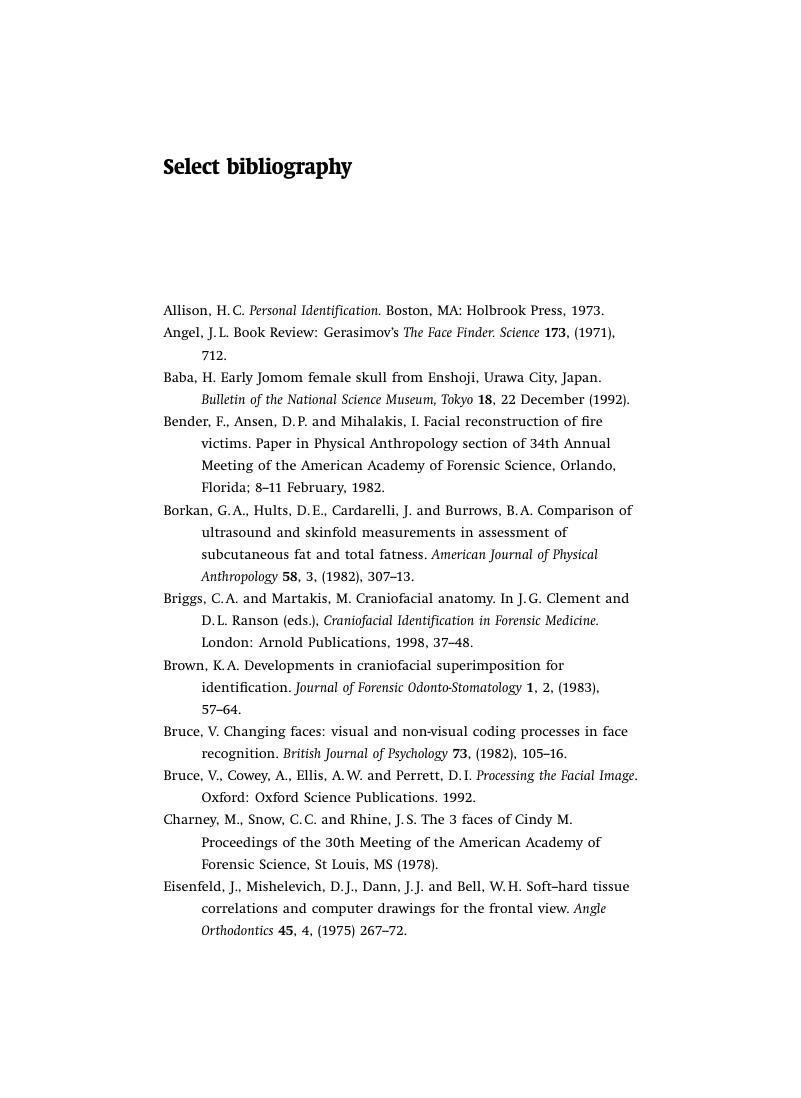Book contents
- Frontmatter
- Contents
- Foreword
- Acknowledgements
- Introduction
- 1 The human face
- 2 The history of facial reconstruction
- 3 The skull
- 4 The relationship between hard and soft tissues of the face
- 5 Facial tissue depth measurement
- 6 The Manchester method of facial reconstruction
- 7 The accuracy of facial reconstruction
- 8 Juvenile facial reconstruction
- References
- Select bibliography
- Index
- References
Select bibliography
Published online by Cambridge University Press: 05 June 2013
- Frontmatter
- Contents
- Foreword
- Acknowledgements
- Introduction
- 1 The human face
- 2 The history of facial reconstruction
- 3 The skull
- 4 The relationship between hard and soft tissues of the face
- 5 Facial tissue depth measurement
- 6 The Manchester method of facial reconstruction
- 7 The accuracy of facial reconstruction
- 8 Juvenile facial reconstruction
- References
- Select bibliography
- Index
- References
Summary

- Type
- Chapter
- Information
- Forensic Facial Reconstruction , pp. 281 - 283Publisher: Cambridge University PressPrint publication year: 2004



